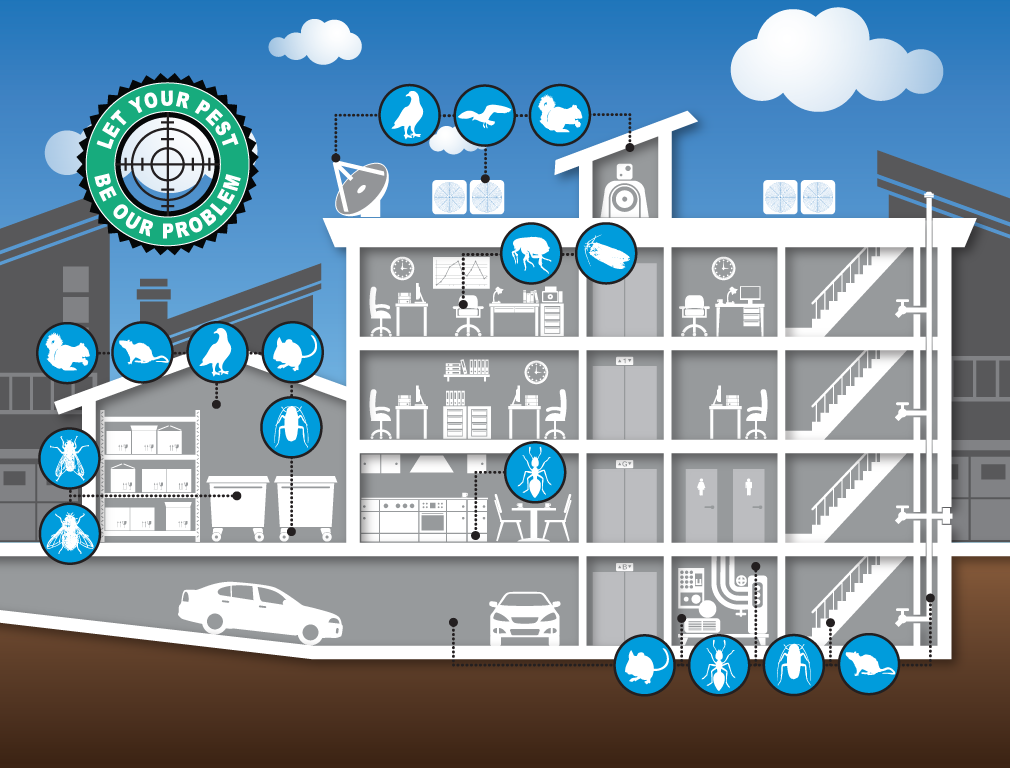Past The Spray: Checking Out Advanced Techniques Made Use Of By Pest Control Specialists
Past The Spray: Checking Out Advanced Techniques Made Use Of By Pest Control Specialists
Blog Article
Web Content By-Josephsen Stewart
Are you tired of relying solely on sprays to deal with insects in your home or office? While sprays can be effective, pest control professionals have created innovative techniques that surpass simply spraying chemicals.
These strategies not only offer more effective and durable solutions, however additionally focus on reducing using hazardous pesticides. By checking out these sophisticated strategies, you will discover an entire new world of insect control techniques that are not only efficient, yet likewise eco-friendly.
So, are you ready to take your pest control game to the following level?
Integrated Bug Management (IPM)
If you're trying to find an effective and environmentally-friendly method to pest control, Integrated Bug Management (IPM) is the service you need. IPM focuses on lasting prevention and administration of bugs, as opposed to simply counting on pesticides. This strategy considers the certain requirements and actions of parasites, in addition to the surrounding setting.
By using a combination of techniques such as organic control, habitat manipulation, and targeted chemical usage, IPM intends to reduce the reliance on chemical therapies and minimize damage to non-target organisms.
One vital element of IPM is monitoring and determining insects accurately. This includes regularly examining and assessing the pest population, along with recognizing the certain species existing. By recognizing the biology and behavior of bugs, bug control specialists can develop targeted methods to disrupt their life cycle and reduce their numbers.
An additional important component of IPM is utilizing non-chemical control methods whenever feasible. This can consist of physical obstacles, such as setting up displays or securing fractures and holes, to prevent insects from entering buildings. Furthermore, cultural practices, like proper hygiene and waste administration, can assist get rid of parasite food sources and breeding premises.
When chemicals are required, IPM focuses on using them carefully and as a last resort. This indicates selecting the least hazardous and most efficient option, applying it exactly and only to influenced locations, and following all security standards. By minimizing chemical usage, IPM lowers the possible threats to human wellness and the atmosphere.
Biological Control
To better enhance the effectiveness of Integrated Parasite Management (IPM), the following subtopic we'll explore is the method of biological control. This technique uses natural predators or bloodsuckers to regulate pests.
Below are 4 key aspects of biological control:.
1. Intro of natural enemies: In this method, useful insects or organisms are introduced to the location plagued with insects. These all-natural opponents victimize the pests, helping to decrease their population.
2. Conservation of all-natural opponents: As opposed to introducing brand-new microorganisms, this technique concentrates on producing a suitable atmosphere for existing valuable bugs. This can be attained with supplying food, sanctuary, and water sources.
3. https://www.digitaljournal.com/pr/mint-pest-control-uses-advanced-ecobloc-technology-and-microencapsulated-pesticide-formulations-for-premium-pest-control-services-in-indianapolis-in : Right here, the variety of natural enemies is increased unnaturally by reproducing and launching them right into the infested area. This aids to swiftly lower the pest populace.
4. Push-pull approach: This technique combines repellents and attractants to adjust the actions of parasites. Repellents push pests away from crops, while attractants tempt them in the direction of catch crops or locations where they can be conveniently controlled.
Environment Adjustment
Habitat alteration plays an essential function in bug control by changing the environment to prevent bug problems. By making changes to the physical attributes of a space, you can produce an inhospitable environment for parasites, making it harder for them to endure and thrive.
One typical method of habitat alteration is getting rid of or lowering possible food resources for bugs. This can include proper waste administration, sealing containers, and cleaning up food crumbs.
In addition, removing or decreasing locations of standing water can help control parasites like mosquitoes.
Changing the landscape by trimming trees and bushes away from structures can likewise prevent parasites from accessing your home.
Verdict.
So there you have it - the innovative methods used by insect control experts go beyond simply splashing chemicals. Integrated Parasite Monitoring (IPM) integrates numerous techniques to successfully manage bugs, while biological control harnesses natural adversaries to keep parasite populations in check.
https://www.wnypapers.com/news/article/current/2022/06/03/150862/wild-kritters-to-hold-basket-raffle-to-support-animal-rescue-services plays a vital role in avoiding parasite invasions.
Did you know that according to a research, applying IPM techniques minimized chemical usage by approximately 71%? This not just safeguards our wellness and the setting yet also saves cash in the future.
